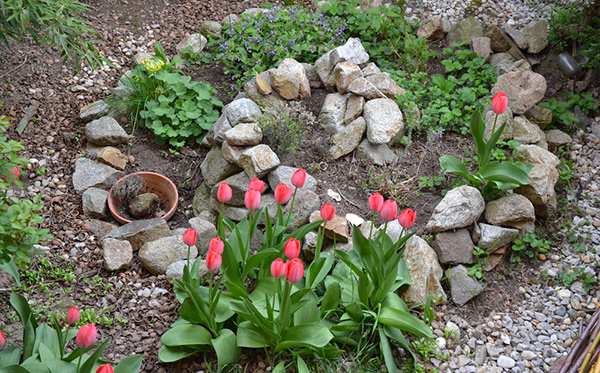
In essence this system has a number of principles to follow if you want to care for people and the earth, and plan a landscape where each area works together and in synergy with nature.
Permaculture has 12 main principles, and among them are:
- Not creating waste
- Using renewable resource
- Working with the patterns of nature, like spirals, edges and gravity
- Knowing the characteristics of your land
- Using a diverse range of plants
Permaculture gardening
It helps to think of permaculture garden design as a plan for putting nature to work at your place. And your plan will depend on what's unique about your place - does it get lots of sun that can be used for energy and heat? How can water be maximised and re-used? Where will your garden be? What will you choose to plant?
Permaculture experts recommend a range of plant sizes and types to make full use of each one - larger crops will shade and protect smaller ones, while others will help keep soil healthy for their companions. And grouped together, plants can foster ecosystems including bird life and bees.
The patterns of nature
Experts also say it's helpful to plant in spirals and along the edges of waterways or paths, which is where there are often rich ecosystems. If you're considering where to plant or how to put water to use, try making the most of natural slopes and gravity or areas that are naturally flat and easy to maintain.
Multi-tasking
Re-using renewable resources like water and energy isn't the only way permaculturists achieve many things from one plant or developed area. You might plant your garden next to a natural water source or a compost patch, for example. Or create hedges to segment different planting zones or to keep animals secure.
If you're practicing the principles of permaculture or have a permaculture garden, why not share your tips by leaving us a comment?

